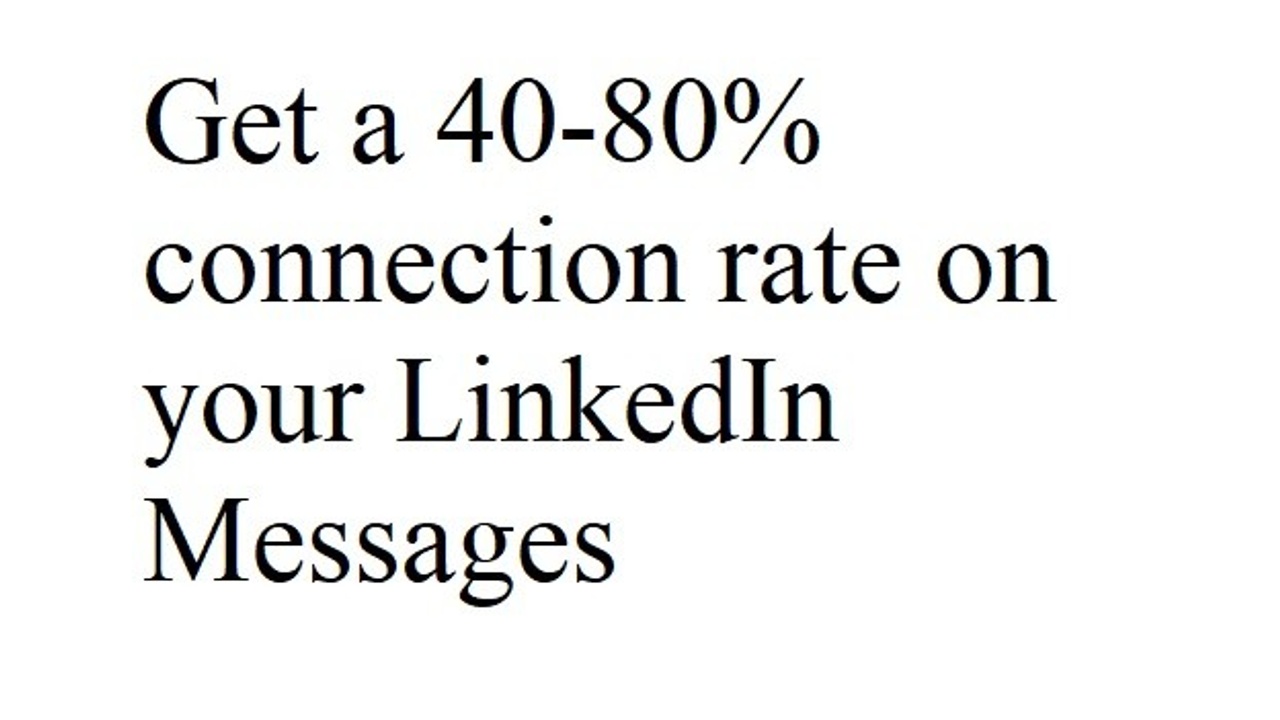40-80% Connection Rate with LinkedIn? Yes, These 3 Guidelines

Messaging on LinkedIn is a pain.
Not because messages are hard to write (worse case you can copy/paste from a proven course), but due to the fact that no one can guarantee that your message is accepted.
Just think about it… you finally get the guts to message strangers, but no one can guarantee requests get accepted.
That often stops us from starting.
So, I thought it would be fun to analyze successful messsages among my community and see what common characteristics that they have.
That way you can replicate what they are doing and increase the likelihood that your requests are accepted.
Now for this study, I looked at all the messages my students were sending.
Here’s what we learned.
We are able to get as high as 80% acceptance rates:

Amrita was able to get 137/160 = 85.6% acceptance rate using her messages. So, first thing - great reponse rates are possibe!
It's not personal, if no immediate connection
When you request a call with someone, understand that PEOPLE:
- May be willing to speak, but don’t like using LinkedIn to message
- May not be active on LinkedIn
- Are busy for sure!
What doing it right looks like:
- Your request to connect follows a formula
- Asks only if they will connect - not if they will do more
- Your emphasis is on THEM, not what they have or do
We find that when we space out and break up the process, we have the space to first message to connect, and then message again about our "ask", which in your case is to meet the person since we're looking to get interviews and offers.
So, how to handle this?
Here's how we recommend structuring the request to connect (from the free job offer secrets course)
- We're focusing on them, using their first name, and we don't create a huge separation between them and us. They are not "Sir" or "Manager".
- We are gracious - we wish them well.
- We bring up the thing that we are doing that is RELEVANT TO THEM.
- We simply ask if they will connect in a short, casual way.
What the results look like:

- Between 40% and 80% acceptance
- At leaset 4 of 10 will accept your request to connect (40-80%)
- of the 4, 1 will immediately say yes to a call
- of the 4 3 will not respond (expect 25% yes immediately).
So we don't beat ourselves up if 60% or more of people don't connect.
We don't beat ourselves up if 75% of those that do connect don't answer our request for a call.
It just means they may be busy or just don't like messaging on linkedIn.
How we can improve from here
Once we see things as they are (people are busy, for example), we know that we can follow-up in other ways.
- Having connected, we can send them an email. Their address will usually be given to you since you are new connection.
- Having connected and asked for the meeting, if not response, we can send them another LinkedIn message and then move to email.
Conclusion
Whether you like it or not, not hearing back right away is going to happen when you message people that you don't yet know.
But that is also the point. That future boss of yours doesn't yet know you.
And we only need a portion of people to accept our request. We can let the jerks or non-fans fall to the wayside while we do our best to follow-up with those who may be great to meet..
Now of course there are other elements to the total process to get people on a call like the request to have a call and the scheduling of the call on your calendar and the actual execution of the networking meeting, but for this analysis, we wanted to focus on the characteristics (ones that you can easily control) that make a request connect well for you.
Out of curiousity, do you target the executives who can hire you or focus mostly on juniors?

